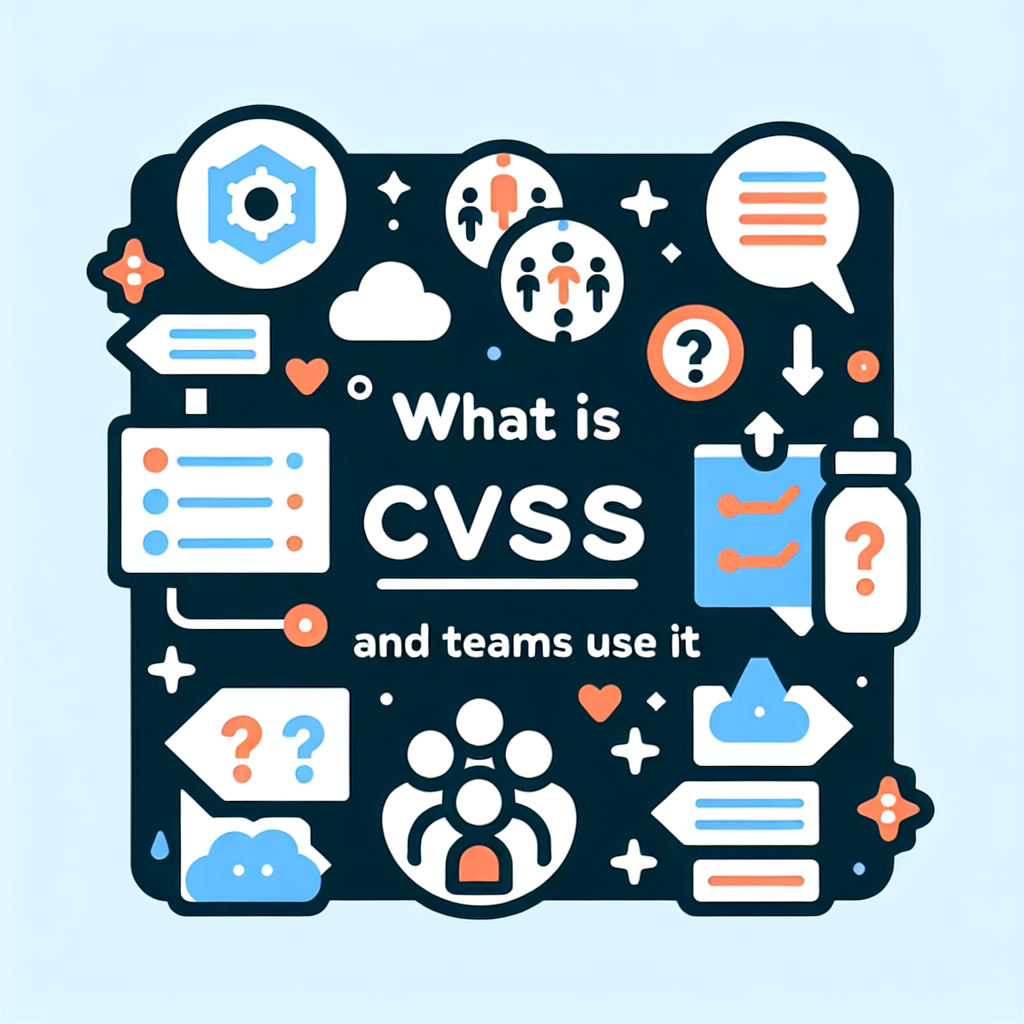
CVSS (Common Vulnerability Scoring System) gives vulnerabilities a standardized score between 0 and 10 so teams can triage risk consistently. Use the Base score for initial prioritization, then refine with Temporal and Environmental adjustments to reflect real-world risk.

CVSS is a standardized scoring system that rates vulnerabilities from 0 to 10, with higher numbers indicating greater severity. It helps security teams prioritize remediation by translating technical details into an actionable numeric score. Organizations use CVSS to compare risks across different systems and vendors. While CVSS gives structure, it doesn’t replace context-specific risk analysis. Consider CVSS a starting point for triage, not a final decision.
Scores run from 0.0 to 10.0 and map to severity tiers: 0 (None), 0.1–3.9 (Low), 4.0–6.9 (Medium), 7.0–8.9 (High), and 9.0–10.0 (Critical). A higher score indicates a vulnerability that is easier to exploit or causes greater impact. Use these tiers to set response SLAs and allocate resources. Remember, severity alone doesn’t reflect business impact — that’s where environmental metrics matter.
The most important part: CVSS combines fixed and adjustable metrics into a single score. Base metrics capture a flaw’s intrinsic properties; Temporal metrics add time‑sensitive info like exploit availability; Environmental metrics adjust the score to your specific assets. A formula converts these metrics into a numeric value between 0 and 10. Tools and calculators handle the math—your job is to choose metric values that reflect reality.
Base metrics represent the unchanging technical characteristics of a vulnerability — they form the initial score. Temporal metrics reflect things that change over time, such as exploit code maturity or available patches. Environmental metrics let you tailor the score to asset importance, existing controls, and business impact. Combining the three produces a score that’s both standardized and adaptable. Treat the Base score as the baseline and the others as refinements.
Base metrics include exploitability factors like Attack Vector, Attack Complexity, Privileges Required, and User Interaction. They also measure potential impact across Confidentiality, Integrity, and Availability. Each component has predefined values that feed into the Base score calculation. For example, a remote Attack Vector and no Privileges Required usually raise the score. Accurate Base metrics are essential because they set the foundation for all later adjustments.
Different CVSS releases update definitions and scoring rules, so the same vulnerability can get different scores across versions. Most orgs now use CVSS v3.1 or v4.0; v4.0 improved precision in several metrics. When comparing historical data, note which CVSS version was used. Version differences can change prioritization — a v3 score marked Medium might be lower or higher under v4.0, so track versioning in your records.
CVSS doesn’t understand your business context, which means it can misrepresent real risk for specific assets. It also doesn’t indicate whether a vulnerability is being actively exploited — that requires threat telemetry or prediction systems. Scoring can be subjective if teams choose different metric values. Finally, CVSS is a snapshot; it needs Temporal updates and environmental tuning to stay relevant. Use other data sources alongside CVSS for better decisions.
Think of CVE as the identifier and CVSS as the severity rating assigned to that identifier. A CVE tells you which vulnerability exists; CVSS quantifies how dangerous it is. Many vulnerability feeds list CVE entries with associated CVSS scores for quick triage. You’ll often use a CVE to find vendor advisories and a CVSS score to decide urgency. Both are necessary for effective vulnerability management.
Start with the Base score for initial triage, then factor in Temporal and Environmental metrics before scheduling remediation. Combine CVSS with exploit intelligence, asset criticality, and your organization’s risk tolerance. Prioritize Critical and High scores on business‑critical systems first, but don’t ignore Medium scores that affect sensitive data. Document your prioritization rules so decisions are consistent across teams.
Use Environmental metrics to weight Confidentiality, Integrity, and Availability according to asset value, and modify Base metrics if compensating controls are in place. For example, an exposed development server with strong network isolation may warrant a lower effective score. Regularly review and update environmental values as system roles or controls change. Calibration workshops with stakeholders help keep scores aligned with business risk.
Even without a public exploit, a high Base score still indicates technical severity and should be triaged based on asset criticality. Temporal metrics let you downgrade urgency if exploit code maturity is low and a patch is widely available. However, monitor threat intelligence for signs of emerging exploitation. In many cases, applying available patches proactively prevents rapid escalation once exploits appear.
Core CVSS data and calculators are available from standards bodies and vulnerability databases, but many security vendors also publish CVSS scores alongside CVE entries. For a single destination to learn more about vulnerability scoring and related tools, visit Palisade. Use reputable feeds and calculators to ensure you’re using the right CVSS version and metric values. Keep tools updated to match the CVSS version your program adopts.
No. CVSS provides standard severity, but combine it with exploit telemetry, asset value, and business impact for full prioritization.
Yes — CVSS tiers can trigger automated workflows, but include environmental checks to avoid fixing low‑impact items unnecessarily.
Use the version that best fits your needs; v4.0 offers more precision, but ensure tools and feeds you rely on support it.
Not always. Patch priority should consider asset criticality, exposure, and compensating controls in addition to the CVSS score.
Cross‑functional teams (security, IT ops, and business owners) should define Environmental values so scores reflect real business impact.